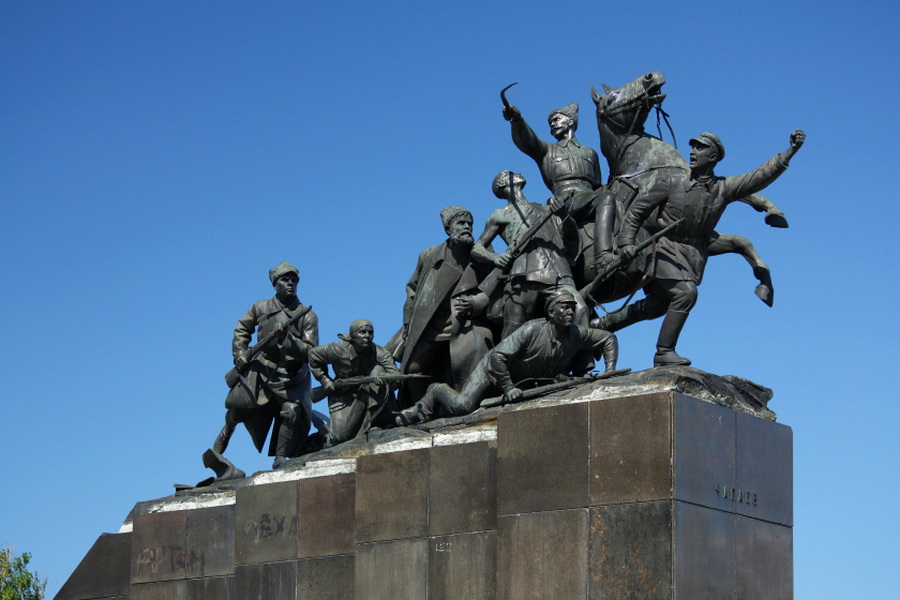
The official history of Samara begins from 1586, with the construction of “Samara township” fortress on the Volga. An order to construct an outpost on the Russia’s southern borders was issued by Tsar Feodor I the Blessed. Although the diplomats told to the neighboring Nogai Khanate that the fort was needed for overall protection from thieves and Cossacks, in fact, the purpose was to control the area around the Volga, which was a crossroads of many trade routes.
However, it is known for certain that the first settlements sprang up there in the XIV century. There was a sparsely inhabited trade quay, which was already plotted on the maps of Venetian merchants of that time. Its name was Samar. By the way, the fortress name, and later, that of the city originated from the similar-named Samara River, which flows into the Volga.
Initially, the "Samara Township" fortress was only inhabited by soldiers, but gradually it had trade developing and houses being built behind its defensive walls. So in 1688 Samara got its present name and was incorporated as a county-level city. At the beginning of the XVIII century, it numbered more than 200 yards, inhabited by a few thousands of people, excluding the various merchants who were bringing goods from the East. During this period, the city was the center of two peasant uprisings which, however, were severely suppressed.
In 1780 Samara opened various government institutions: the treasury, courts, municipal government and other organizations. And in order to arrange the development of the city, in 1782 the city administrators approved a master structure plan.
The city was growing: in 1850, Samara with the population of 15,000 people became the center of a new Samara province. A half-century later, the population increased to 90,000, and in another 15 years - up to 150,000 people. Every week the city had markets, and three times a year held large trade fairs, to sell all kinds of agricultural products. In 1877, the Orenburg railway was built through the city. Samara quay, taking up to 1,000 ships a year, became one of the best on the Volga. While in the outskirts Samara developed wheat growing in addition to the well-established trade, thus the city became the largest flour producer in all Russia.
In the XX century Samara continued its development. In 1917-1918, following the February and October revolutions, the Soviet power came there. In 1935 the city was renamed Kuybyshev, in honor of the famous Soviet statesman. This name remained until 1991, up to a collapse of the Soviet Union.
During the Great Patriotic War (1941-1945) Samara received people and plants evacuated there from the western borders. The city having become a center of military aircraft industry, built over 80 percent of IL -2, one of the main attack aircrafts against German aviation “Luftwaffe”. Thanks to the enterprises, evacuated to Samara, its production increased by 5 times, while its population rose from 400,000 to 600,000. During the war, Samara made an invaluable contribution to the victory over Nazi Germany.
In the postwar years, Kuybyshev confirmed its status as the USSR’s industrial center. It developed the aviation industry, and soon set up the rocket industry there: Yuri Gagarin made the space flight first ever in the history of mankind by the rocket assembled by the “CSDB Progress” Samara Aerospace Enterprise. In addition, the city has a strong capacity in smelting, refining, heavy and light industries. Along with the growth in economy, there was also a growth in population: as of 1979, Samara was home to 1.2 million people. And this is the actual maximum population in the city’s history, and today the demographic indicators keep the same level.
In the days of perestroika and Soviet collapse, Samara has lost its industrial importance. The products of Samara plants did not meet the quality, the military production became unprofitable, and the city experienced an economic crisis that was lasting almost 20 years. But with the beginning of the XXI century, the situation stabilized; the enterprises changed the line of business while the construction segment gained momentum. Today, Samara, which began its history with a small fortress, is one of leading Russian cities, in population as well as in culture, science and industry.

